Via ferratas (“iron trails”) are steep and exposed trails running up and along abrupt hills and mountain sides, where the risk of a fatal fall is minimized by having a steel cable run along the trail – to which you can attach yourself with a via ferrata set. In addition to that via ferrata trails are usually equipped with man-made footsteps, holds and even ladders. This allows hikers to reach relatively difficult summits without advanced climbing skills. It is, however, essential that you are not afraid of heights and that you have some basic experience in traversing rough or uneven terrain. If you are wondering how via ferrata trails look like, please check our review of the Gradiska Tura trail.
As via ferratas are increasingly popular among outdoor enthusiasts, we decided to write a short article in which we will explain how to put on and use the necessary equipment; a climbing harness, helmet and above all, the via ferrata set. The basic idea of this set is that you are at all times connected to the steel cable running through iron rods along the via ferrata trail; that way a potential fall will be shortened and more importantly, coming to a gradual halt rather than a sudden stop which can cause severe injuries.
Many recreational hikers are, however, not familiar with this more climbing-oriented gear and thus use it incorrectly – which can be very dangerous on the more vertical via ferrata paths.
So, the essential equipment for via ferrata trails is:
- Climbing harness (combined with the via ferrata set, it will put a halt to a potential fall)
- Via ferrata set (detachable set of ropes with carabiners which you will connect to the steel wire on the via ferrata trail)
- Helmet (to protect you from small rocks falling down steep slopes)
- Hiking Boots (via ferrata trails are not for sneakers)
Putting on via ferrata gear
Climbing Harness
Basics
There are three different types of climbing harnesses; Sit harnesses (for wearing around your hips), chest harnesses (usually used together with sit harnesses) and full-body harnesses. The most common type for via ferrata trails are sit harnesses as they take up the least space in your backpack and allow great freedom of movement. However, sit harnesses have some disadvantages in comparison to the other two types – the main being that they do not offer support in the upper body. This can be particular harmful if you fall while wearing a heavy backpack as the backpack will pull your upper body backwards. A full-body harness has its main gravity point around solar plexus and will therefore ensure that your back stays more aligned with the rest of your body in a fall, thus minimizing the chance of a broken back.
Putting on a Climbing Harness
To put on a climbing harness you should first locate which side is the front and which is the backside of the harness. The easiest way to do this is to search for a belay loop (Image 1) which connects the waist band and leg loops and is located on the front side of the harness. When you have turned your climbing harness the right way, you should put your legs through the waist band and into the leg loops. Then pull the waistband up so that it comes up somewhere between your hips and umbilicus, covering your obliques. The leg loops should sit high on your ties. When the harness is in the correct position, tighten the waistband (Image 2) and the leg loops (Image 3). The waistband and leg loops should fit relatively snug, but without restricting your freedom of movement or causing discomfort.
Via Ferrata Set
Basics
A via ferrata set consists of an attachment loop, energy-absorption system, lanyard and two carabiners. The via ferrata set basically works by connecting your harness to the steel cable running through iron rods along the via ferrata trail, by having at least one of the carabiners hooked on to it at all times. That way a potential fall will come to a halt earlier as you are stopped gradually (by help of the energy-absorption mechanism) and the risk of severe injuries is reduced.
There are two different types of via ferrata sets; V sets and Y sets. The main difference between them is that when using a V set, you should attempt to mostly have only one carabiner hooked onto the steel cable while for a Y set you should have both carabiners clipped onto the steel cable as much as possible. Thus, when coming to an iron rod (fixation point for the steel cable) with a V set, you should clip the free carabiner to the steel cable on the other side of the iron rod before detaching the other carabiner. So, for a moment you will have both carabiners clipped on the steel cable, but it should otherwise be avoided as the energy-absorption won’t work properly if both carabiners are attached. If both are attached, the V set will still stop a potential fall, but not in a gentle manner.
A Y set works in the opposite manner; you should aim at having both carabiners clipped on at all times, except when by-passing an iron rod where you will detach and then reattach one carabiner at a time. The Y sets come with a friction brake or tear-out webbing energy-absorption mechanism. Previously, the friction brake was the most commonly used on via ferrata trails, but now sets with tear-out webbing are the norm. Read more about this in the article Why You Should Use a Via Ferrata Set with Tear-Out Webbing. The tear-out webbing (as the name suggests) tears if you fall and can thus be used only for one fall. Afterwards it has to be discarded. The disadvantage here is obvious – if you fall in the middle of a hike, you are left without the crucial part of your via ferrata gear. Y sets with a friction brake do not have this disadvantage, but on the other hand it is disturbing that it has approx. one meter of rope dangling from the mechanism (i.e. the rope that is pulled through the brake in order to gradually slow you down if you fall) as it can get in your way when climbing.
The carabiners employed in via ferrata sets, are equipped with a spring-lock mechanism and can thus be clipped onto the cable with only one hand. Screw-lock carabiners are not appropriate for the arms of via ferrata sets as each carabineer requires both hands to be attached and detached. Straight gate carabiners are also not appropriate as they do not offer sufficient security.
Types of via ferrata sets:
| Type | Energy-absorption mechanism | How many carabiners to attach at a time | Pros | Cons |
|---|---|---|---|---|
| V Set | Friction brake | One carabiner | - No additional rope for energy absorption mechanism | - Energy absorption mechanism doesn’t work when clipping past the iron rod (fixation point for the steel cable) - Average fall energy absorption (not suitable for kids) |
| Y Set | Friction brake | Both carabiners | - Energy absorption mechanism works when clipping past the iron rod (fixation point for the steel cable) | - Additional rope of the energy absorption mechanism can get in the way while climbing - Average fall energy absorption (not suitable for kids) |
| Y Set | Tear-out webbing | Both carabiners | - Energy absorption mechanism works when clipping past the iron rod (fixation point for the steel cable). - No additional rope for energy absorption mechanism Superb fall energy absorption (suitable for kids) | - Useless after falling |
Attaching Via Ferrata Set to the Climbing Harness
There are two ways to attach the via ferrata set to a climbing harness; with a screw-lock carabiner or with a cow hitch knot. If you don’t have experience with knots we recommend you to attach it with a carabiner in order not to make any mistakes. If you are familiar with the knots, it is best to attach it with a cow hitch knot as this method is handier and eliminates any possible weak links (i.e. a damaged/faulty carabineer). You should attach the via ferrata set to the belay loop of the climbing harness with the set’s attachment loop (see images below – carabiner was used for attachment).
Helmet
Basics
For via ferrata trails you can use a standard climbing helmet or any other helmet (e.g. bicycle helmet, skater helmet etc.) that provides sufficient protection against falling rocks. We would recommend that you use a climbing helmet as they are light and comfortable. Falling rocks are common on via ferrata trails and thus a helmet should be worn at all times while on the trail.
Putting on the helmet
To put on the helmet you should first locate which is the front and which is the backside of the helmet. The best way to do this is to find the rotating button for headband adjustment (Image 1) which is placed on the backside of the helmet. Then you should loosen the headband and put the helmet on. Now tighten the headband (Image 2) so that the helmet stays firmly on your head but does not cause any discomfort. The last thing you should do is to tighten the chinstrap until it comes just under your chin.
Boots
Basics
For via ferrata trails we recommend wearing hiking boots that are equipped with a relatively stiff sole. Boots with stiff soles provide better stability when climbing as they do not flex – for example when you are standing with only the front part of the boot on a rock.
There are many boots that are especially designed for rough trails, but a great boot for via ferrata trails is the Salewa Mountain Trainer Mid. Whichever boots you will choose, be sure to tie them snugly so that the foot doesn’t slide back and forth inside the boot. However, be careful not to tie them too tight as this can cause discomfort.
Using the gear on the trail
Finally, we will describe how to use the via ferrata set. The instructions below apply to via ferrata sets that are equipped with Y lanyards – remember if you have V lanyard, to only have one carabiner clipped onto the cable (except when you are going past the iron rod fixing the cable to the rock).
As you start out, you clip both carabiners onto the cable (Image 1). Start climbing and after two or three meters you will reach the first iron rod – a location where the cable is attached to the rock. Make sure to spot the iron rods as you approach them; if you’ll go past one without reattaching the carabiners on the other side of it, you will have to climb back down because the carabiners won’t be able to move past the iron rod. When you reach the iron rod, detach one of the carabiners and reattach it after the rod (Image 2) and then do the same with the other carabiner. When both carabiners are attached past the iron rod (Image 3) you can continue your climb. Then just repeat these steps on your way towards the top. If you don’t yet have a via ferrata set, please check our selection of the best via ferrata gear.
Do you have any questions about using via ferrata gear? Let us know in the comments below.
Video Guide – How to put on via ferrata equipment

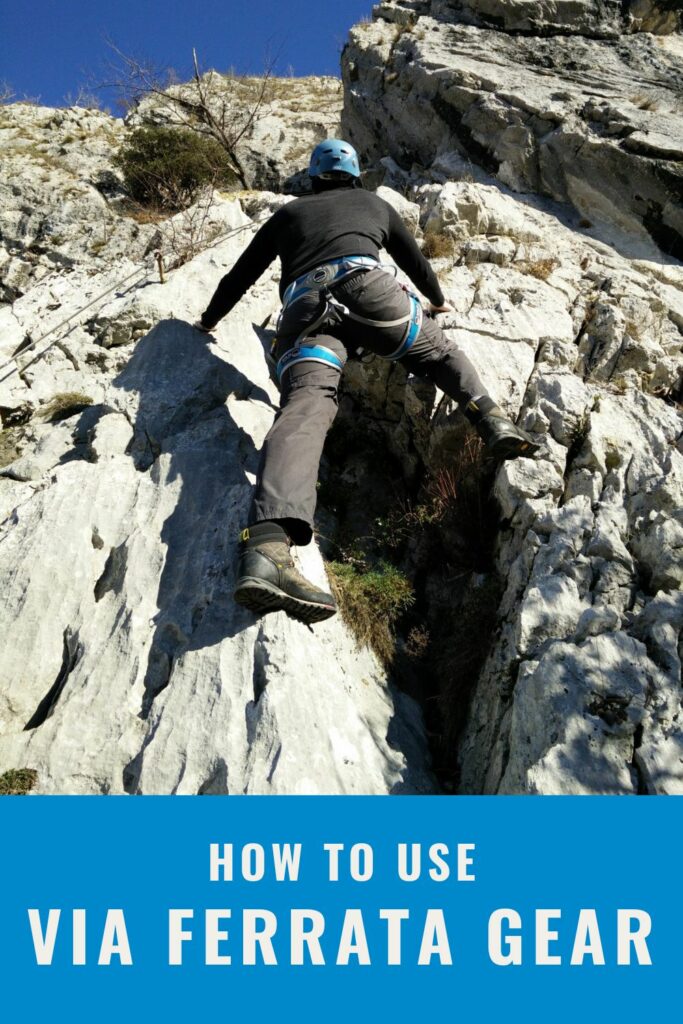
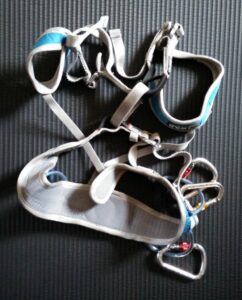
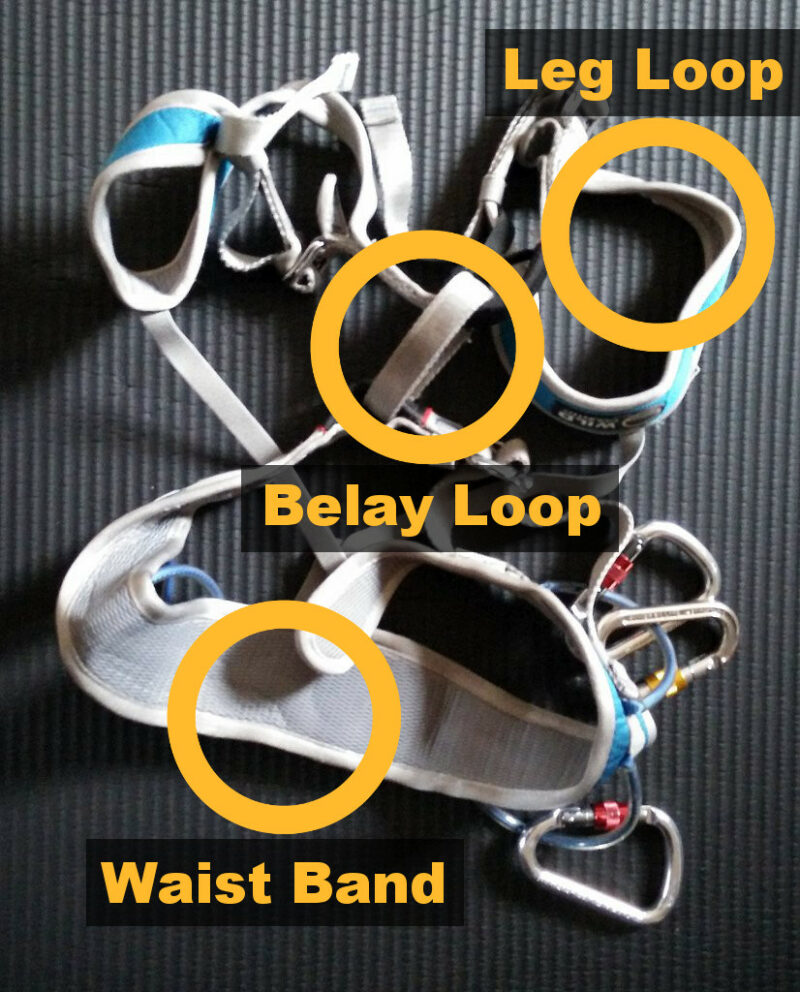

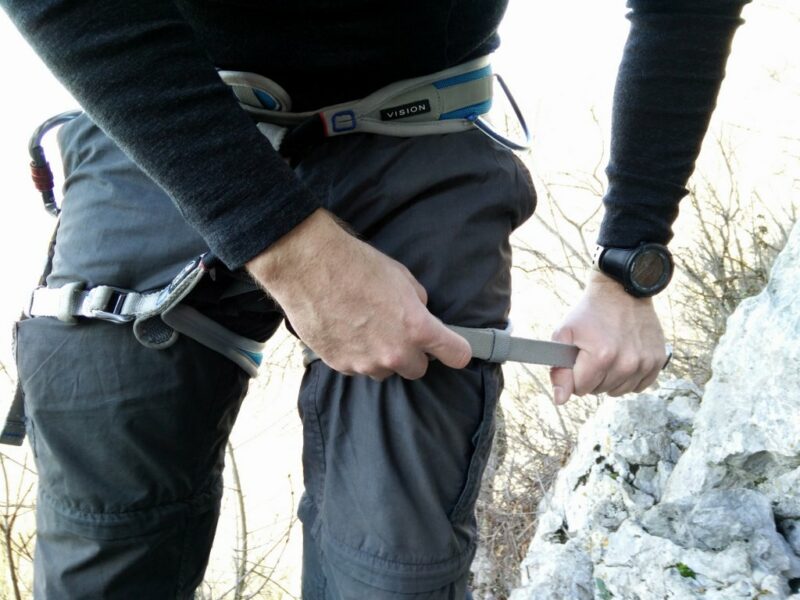
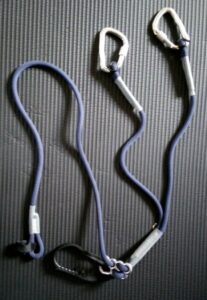
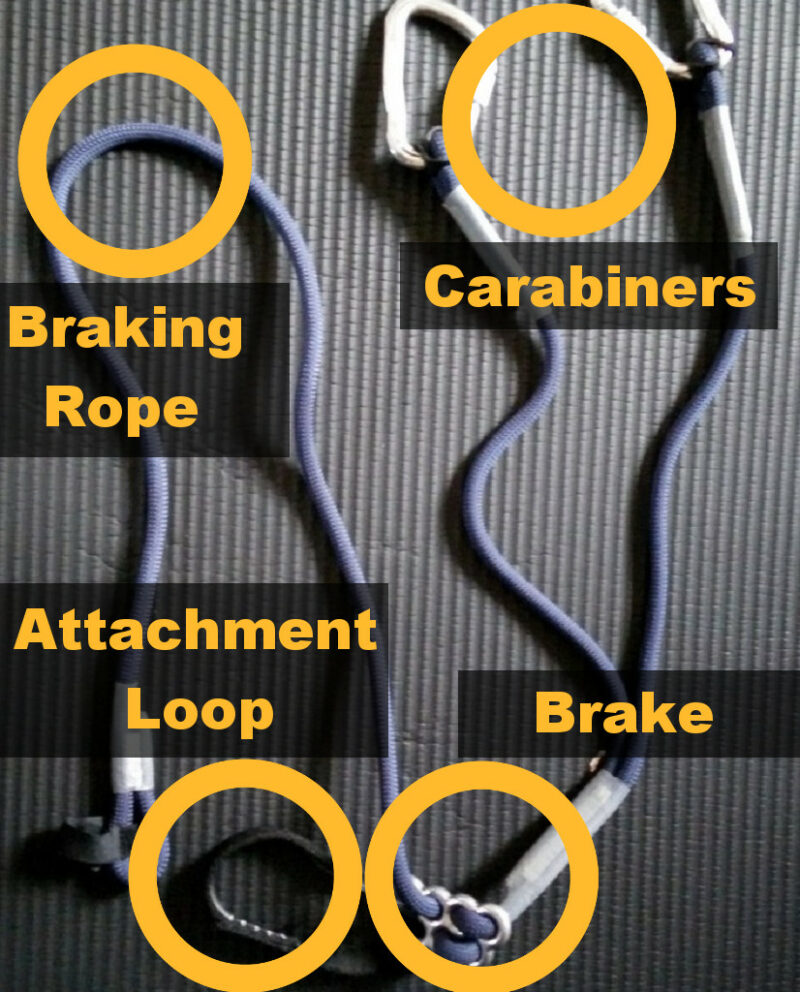
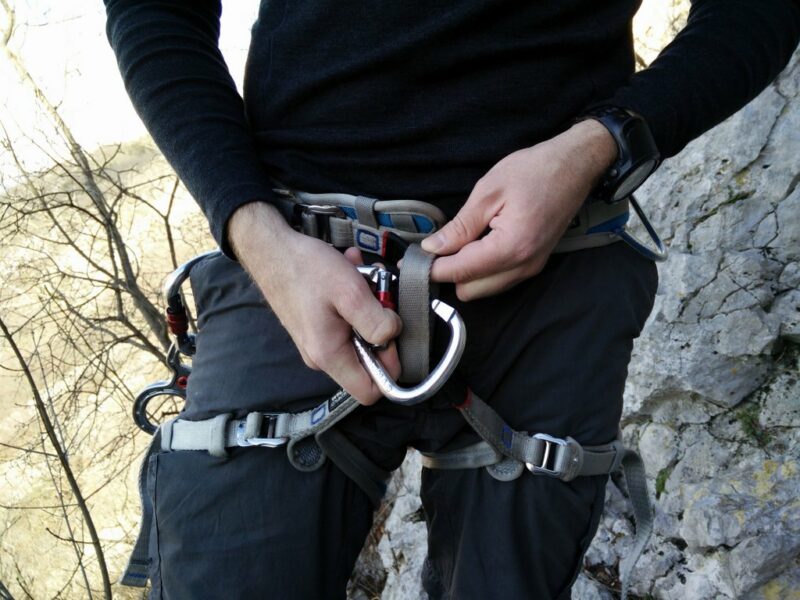
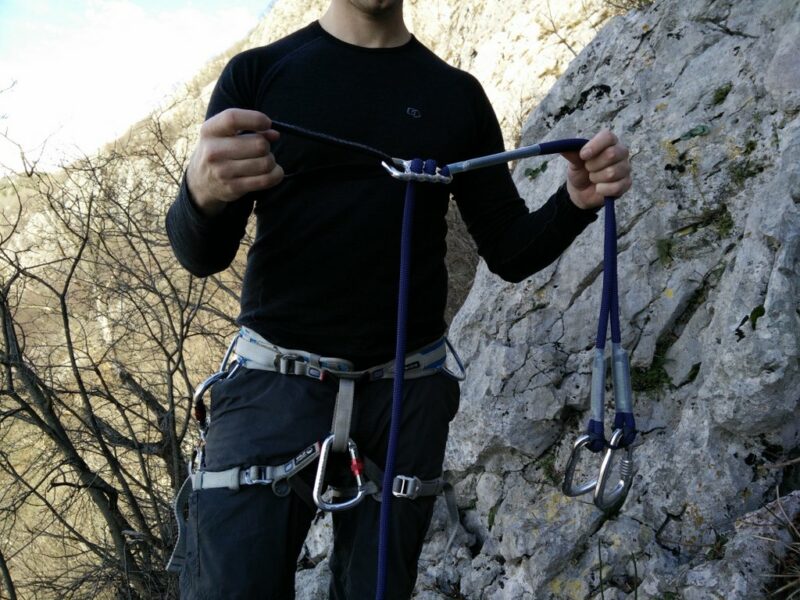
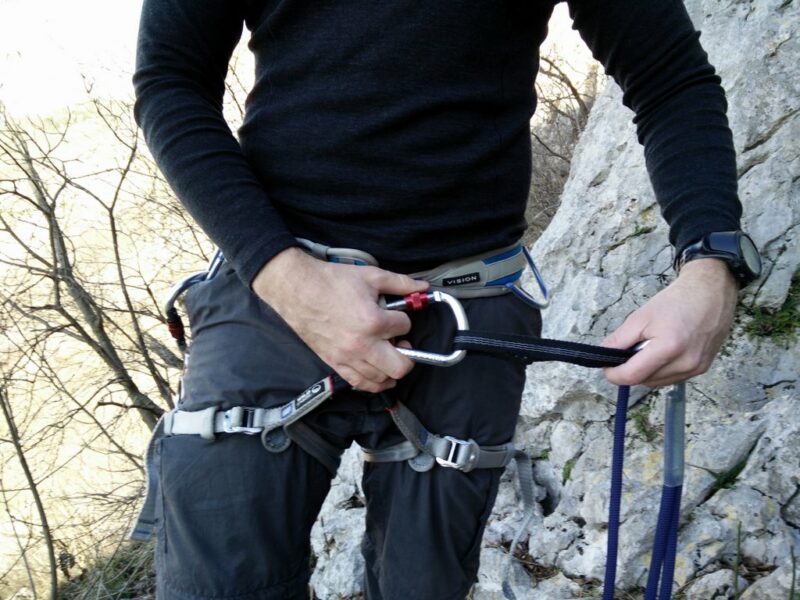
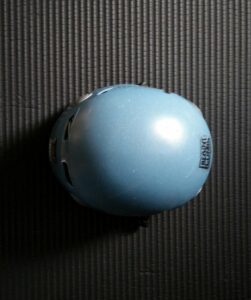
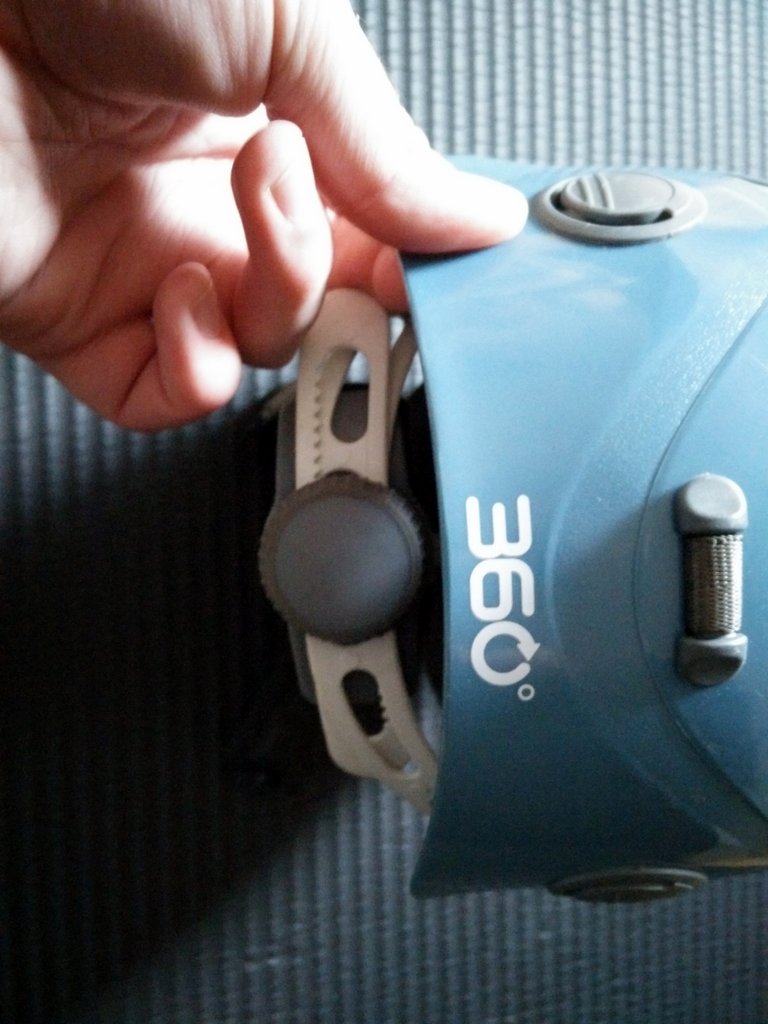
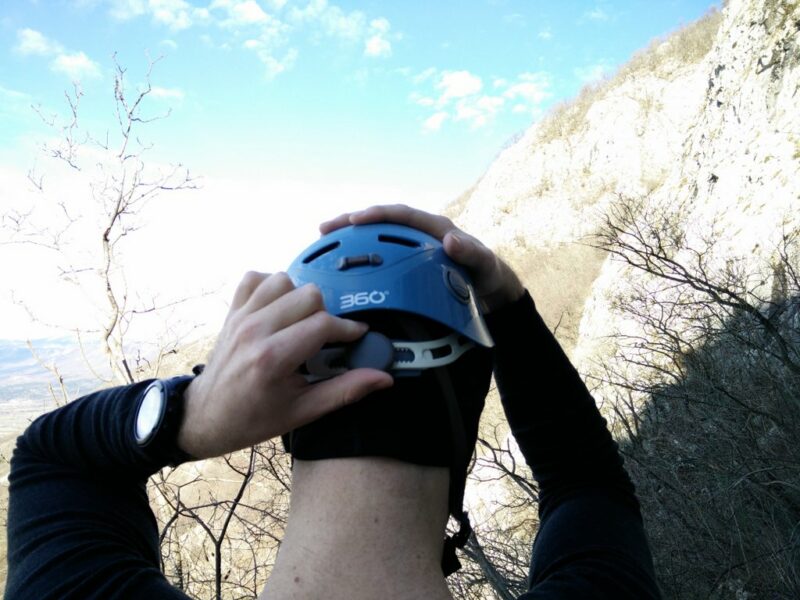
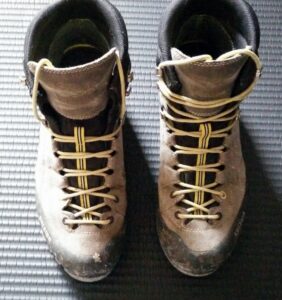
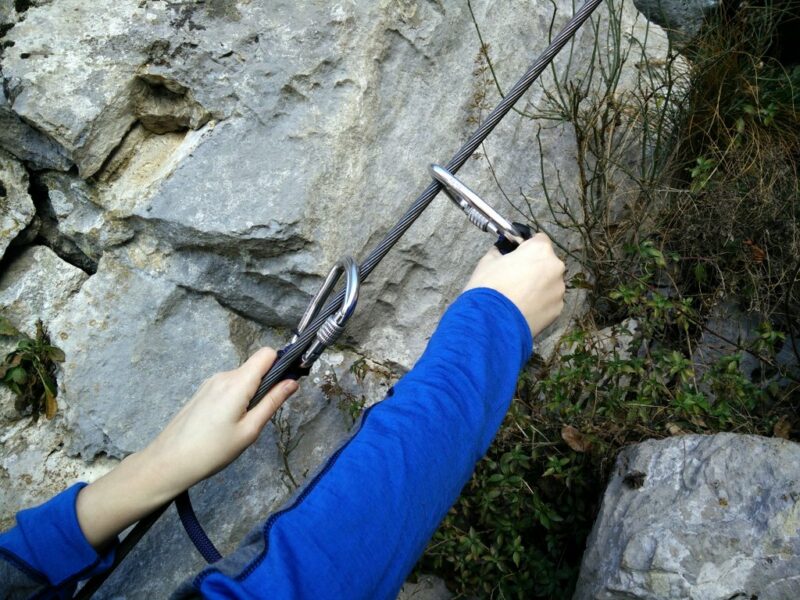

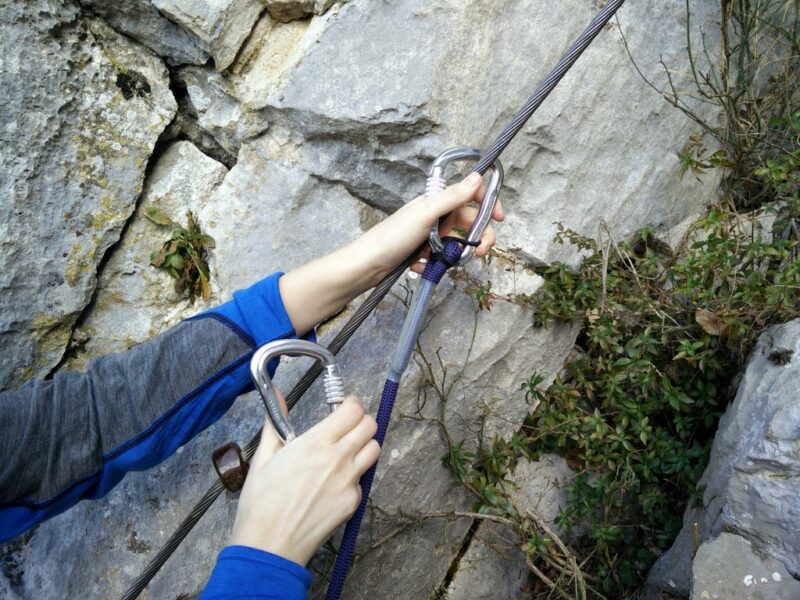
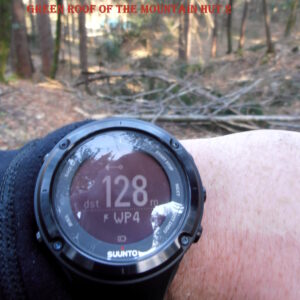
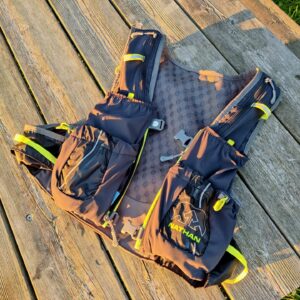





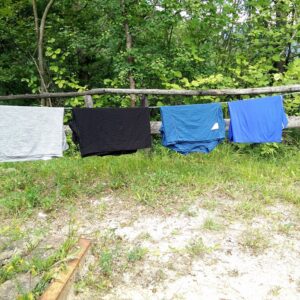

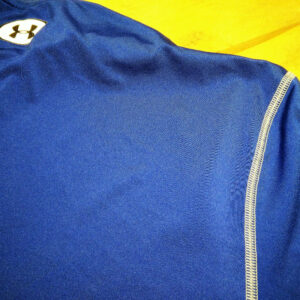











I do not like that in the photos of passing the rod, the climber is using a different hand for each carabiner. There is a temptation to unclip the second carabiner before the first one is fully secured. If the same hand is used for both carabiners, then it would be almost impossible to depart from the correct sequence.
That’s a good point Alan. Thanks for sharing your thoughts on this.